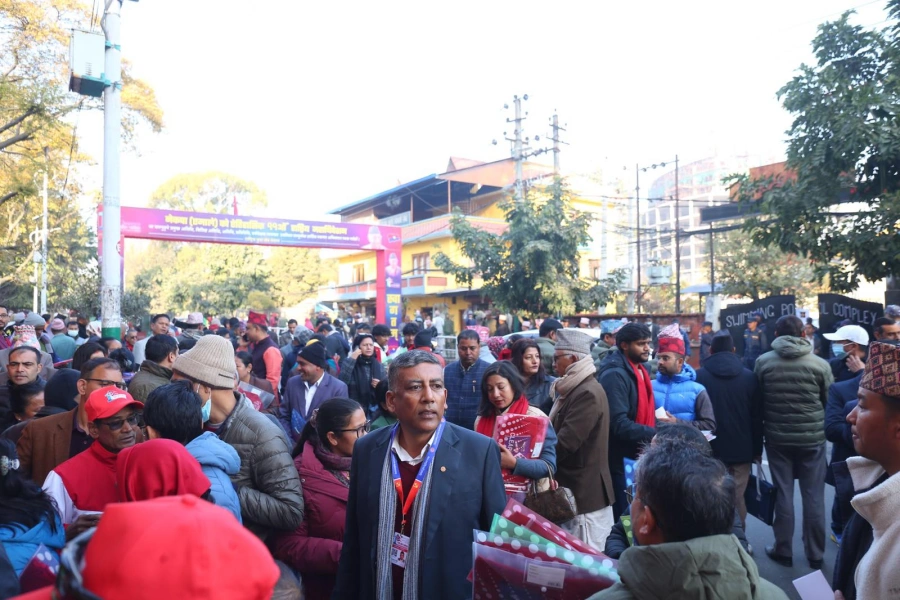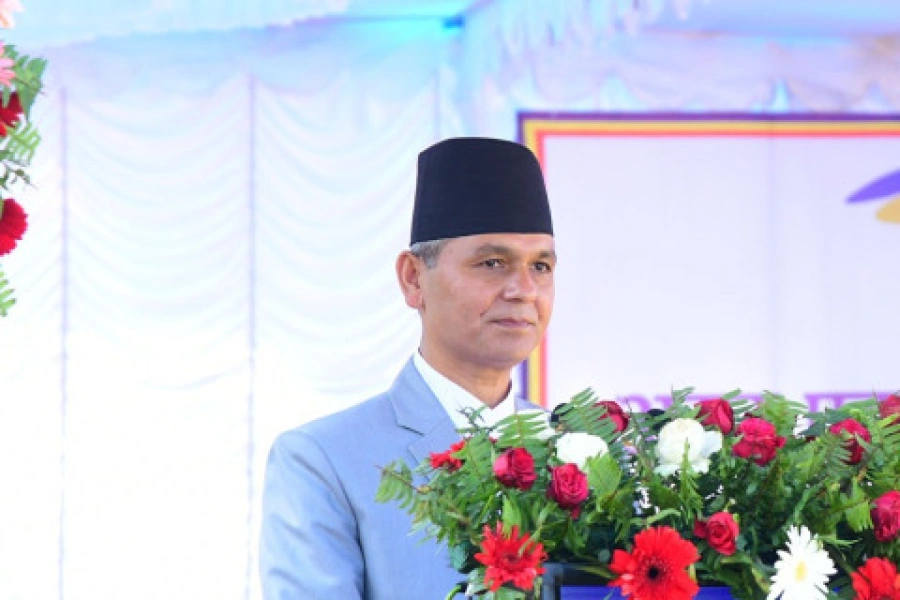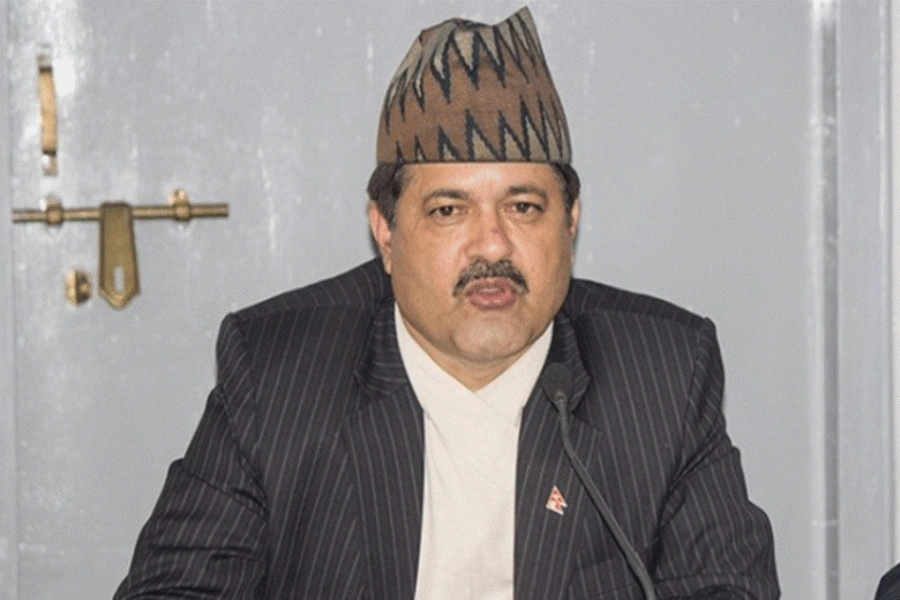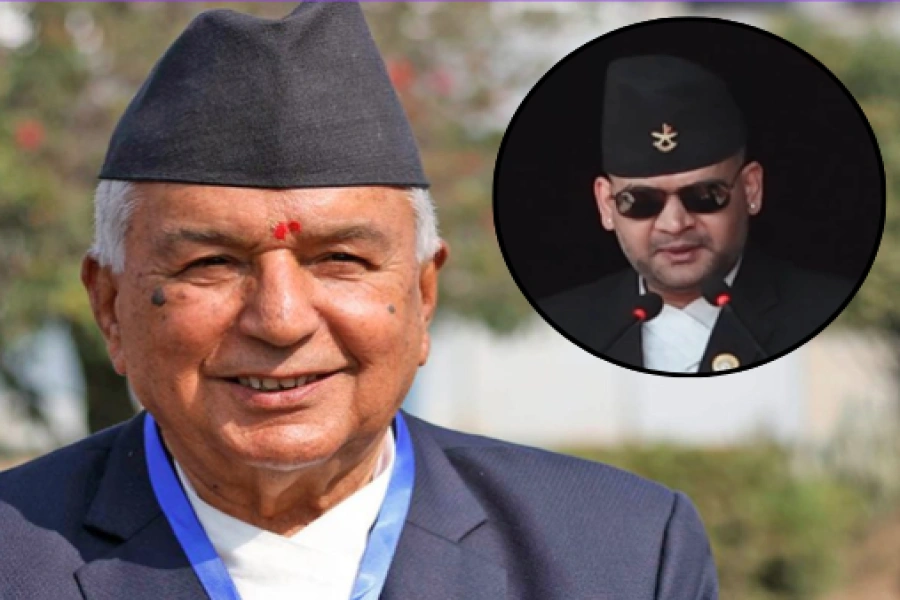It is no longer disputed that in the past decade Nepal has been experiencing an unprecedented increase in the frequency, magnitude and impact of disasters. Some examples are: Food insecurity, fire, landslides and water and air born diseases are recurrent problems in many parts of the farwest and midwest regions. Now diarrhea, respiratory diseases and cholera have become endemic with attacks occurring at regular intervals. Water born disease outbreaks, including diarrhea and cholera, affected more than 250,000 people in 2007/2008. Heavy rain and high winds is an increasingly common feature of the southern and central parts of Nepal. Flooding in 2002 and 2003, and the Koshi flood of 2008 affected more than 10 million people and claimed nearly 200 lives. Annually the southern regions face recurrent, serious flooding and then there is the ever-present threat of earthquakes, all over the country.
Additionally, the disaster prompted increasing levels of migration from hill to Tarai and Kathmandu brings vulnerable people to the urban centers. Most newcomers live in squalid conditions in urban and peri-urban areas, facing high risk of epidemics, floods and social unrest.
This situation is of course exacerbated by climate change - the epicenter of melting snow in the upper Himalayas is creating a threat of regional flooding that effect not only Nepal but India and Bangladesh as well. Nepal’s hazards and risks have trans-boundary characteristics. Nepal’s mountainous regions provide important ecosystems services that can be used for domestic as well as regional purposes. The conservation of these ecosystems is fundamental for the development of socio-economic systems and for the support of livelihoods in South Asia. Against this changing, worsening climate, the frequency and magnitude of hydro-meteorological hazards, national, regional and international agencies urgently necessitate the implementation of radical measures to ensure community safety and protection of our ecological and economic assets. The upward trend in disaster frequency and impact is likely to continue not only in Nepal but also in many other South Asian countries unless Nepal receives significant support toward community resilience and vulnerability reduction program.
Disaster risk management and disaster risk reduction (DRR) are relatively new concepts in Nepal, government and non government bodies have not yet managed to grasp the explicit and implicit meanings behind the terminology. In post Hyogo Framework of Action (2005-2015) scenarios, the government (with supports from UN agencies) prepared documents claiming progress in the process of preparing and responding to disasters at the point of impact. However, the focus of these documents is dominated by what happens immediately before, during and after a disaster; and these factors alone are neither adequate nor sufficient, nor do these papers provide a lasting solution to the ever increasing disaster incidence and variety. Hence, the Nepal government, UN and other agencies who are working to achieve progress in the field should focus today on ensuring greater disaster risk reduction rather than mitigation and amelioration.
The Ministry of Home Affairs is a central government agency dealing with DRR in Nepal. By nature the main remit of the ministry is to deal with and manage emergency situations. Risk reduction, which is a development issue and requires resources,lies outside its area of responsibility. The ministry has neither the resources nor the mandate for effective risk reduction. The establishment of a physical structure of the Emergency Operation Centre with support from foreign donor(s) is not enough to facilitate disaster resilience building in Nepal. When a disaster event occurs, the ministry has to go cap in hand to other government agencies seeking support. There is an urgent and critical need for more comprehensive and systematic coordination of partners to rationalize and prioritize current thinking on disaster risk reduction to provide more systematic and sustainable support to vulnerable communities in Nepal.
National disaster risk reduction platforms have not been performing well as resources are non-existent. Existing local structures for the coordination of DRR (supported by international non government organizations) have not been given full consideration. In some districts, local level DRR structures have been identified, but are dysfunctional or non operational. This situation is exacerbated by a lack of well defined DRR strategies for local levels. National disaster management experts claim that the National Disaster Risk Reduction Strategies 2009 has a mandate for that but local government officials (from the Ministry of Local Development) are reluctant to implement the project in line with the national strategies. This is because National Disaster Risk Reduction Strategies 2009 are based on self juxtaposing central government agencies jockeying for position in an effort to utilize their existing experience and capacity to the best advantage in that local area; not all governments can use the strategies as proxies for their view of DRR because each local context and risk scenario is different. Meanwhile, a number of international organizations based in Nepal are still not clear as to the exact nature of their role in DRR, despite it being a common reference topic for all programming and resource mobilization strategies. The Nepal government’s institutional structures for risk reduction need to be supported by a strong legislative framework; the present one is not well developed. However, the cabinet meeting on February 1 theoretically agreed on a draft of a National Disaster Management Act 2011. This is of course, a welcome initiative.
Let’s analyze the disaster risk in Kathmandu Valley: It is prone to multiple hazards- fire, floods and landslides are frequently occurring disasters which hit many wards and their surrounding villages annually. Sometimes urban flooding results from excessive rainfall but this situation is exacerbated by our poor drainage systems which causes water-logging in many parts of the valley. Such a situation exposes people to epidemic risk. In the recent past, urban house fire has threatened people’s lives due to the poor infrastructure and virtually non-existent fire and rescue services making the vulnerability of the people of Kathmandu exacerbated by disasters, their socio-economic and ecosystem status.
On the one hand, the population of Kathmandu is at a transitional point. The growth rate of the rural population is decreasing mainly due to politically forced displacements and economic migration. This has contributed significantly to the expansion of Kathmandu. Generally, displaced families either settle in areas exposed to local risks or are confined to houses with a high population density ie three to five people occupying a single room for all their needs. This situation causes further deterioration of the local environment and exposes other members of the community to multiple risks. For example basic household services: The drinking water distribution network and the sewage system in Kathmandu are deficient. As a result, the population is forced to consume water from underground or transported in unhygienic tanks from the nearest rivers without proper treatment. Most of the residents dispose of their household sewage directly into the rivers causing contamination in the area and increasing the communicable disease risks. Environmental conditions of Bagmati, Bisnumati and Manohara rivers are typical examples of this problem.
On the other hand, the challenges posed by fire, flooding, heavy rain, water logging, lack of employment opportunities and high housing prices increase the vulnerability of low and middle income families in Kathmandu. In the case of farmers and small and medium scale enterprise and businesses owners, the deteriorating law and order situation and lack of safe drinking water have made them extremely vulnerable. In addition, climate change may affect the residents of the valley through the decline of underground water reserves, floods, waterlogging, heavy rain, landslides, excessive fog (during the winter) and frequent snow fall. Over the centuries, climate variability and extreme weather have caused destruction of assets, infrastructures, historical monuments and livelihood practices and death in other parts of the world and this situation may well be repeated in Kathmandu soon.
The link between disasters and development is now widely accepted. Some of the root causes of disasters are deeply entrenched in development failures or the lack of basic infrastructures. The high level of poverty in Nepal increases vulnerability to disasters. Community resilience to disasters calls for the strengthening of development interventions that address livelihoods. DRR should not be Nepal’s end goal, but a progress toward building resilience and sustainable development. In part due to disasters Nepal is not going to be able to meet its Millennium Development Goals (MDGs). We should not continue to blame nature for our own weakness. Natural hazards have always been a part of Nepali existence and will continue to be so but most are caused by humans and require human solutions. In this situation, it is high time for the government to restructure our disaster response system with sustainable human security in mind.
(Writer is a research associate at Northumbria University, UK and a visiting research fellow at GRSLAB, School of Civil and Environmental Engineering, Yonsei University, Republic of Korea)
ggadrr@gmail.com
North Korea warns of 'fiercer' military responses to U.S., alli...






































